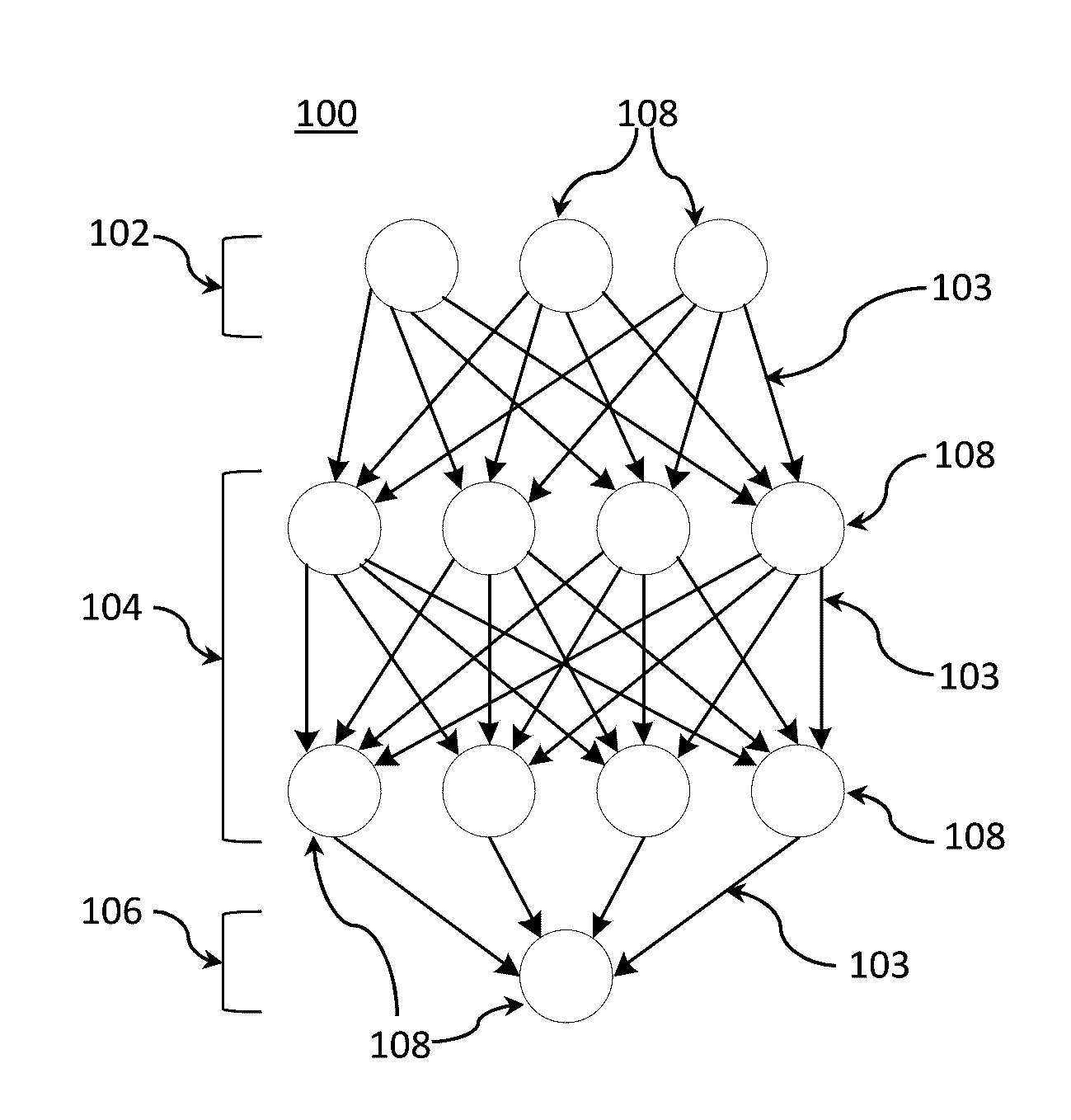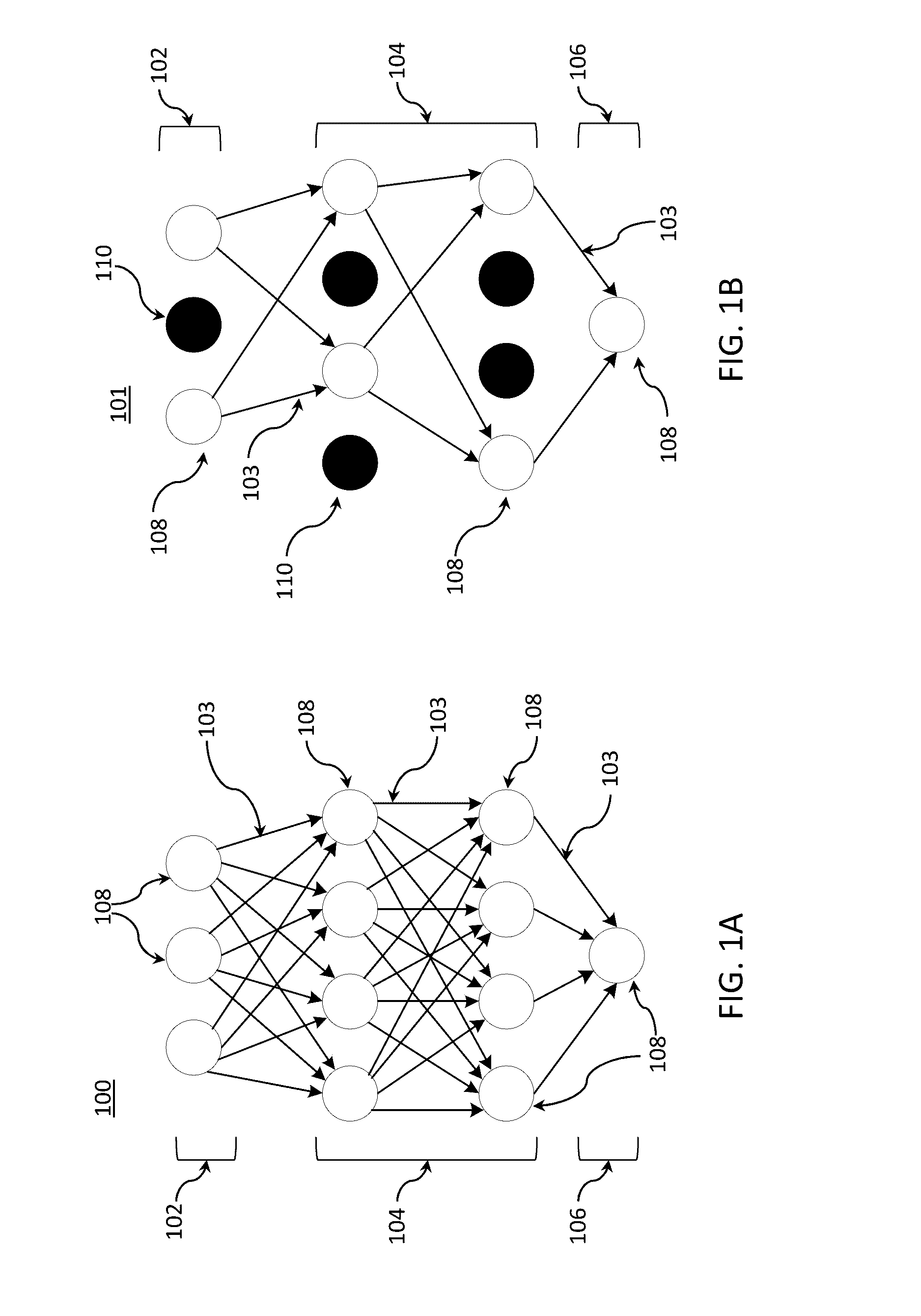Annealed dropout training of neural networks
a neural network and dropout training technology, applied in the field of optimization network performance using dropout training, can solve the problems of general overfitting, model overfitting generally has poor predictive performance, and possibility of overfitting
- Summary
- Abstract
- Description
- Claims
- Application Information
AI Technical Summary
Benefits of technology
Problems solved by technology
Method used
Image
Examples
Embodiment Construction
[0019]The present principles optimize network performance by training a neural network. In one illustrative embodiment, training data may be generated by performing annealed dropout training to regularize a deep neural network. The term “dropout” refers herein to dropping out (or adding) nodes / neurons (or other input or output data). In one embodiment, dropout training includes temporarily removing (or adding) one or more nodes / neurons, and temporarily removing (or adding) all incoming and outgoing connections to the removed (or added) nodes / neurons. Annealed dropout training may include selecting an initial annealing schedule (e.g., a schedule specifying a percentage of inputs or outputs of nodes / neurons to add or drop) during training iterations. It is noted that the terms “node” and “neuron” refer to equivalent structures herein.
[0020]In accordance with particularly useful embodiments, dropout training (e.g., randomly dropping nodes / neurons (and their connections) from a neural n...
PUM
 Login to View More
Login to View More Abstract
Description
Claims
Application Information
 Login to View More
Login to View More - R&D
- Intellectual Property
- Life Sciences
- Materials
- Tech Scout
- Unparalleled Data Quality
- Higher Quality Content
- 60% Fewer Hallucinations
Browse by: Latest US Patents, China's latest patents, Technical Efficacy Thesaurus, Application Domain, Technology Topic, Popular Technical Reports.
© 2025 PatSnap. All rights reserved.Legal|Privacy policy|Modern Slavery Act Transparency Statement|Sitemap|About US| Contact US: help@patsnap.com



